Alejandro Acosta
Frame Interpolation with Multi-Scale Deep Loss Functions and Generative Adversarial Networks
Nov 16, 2017



Abstract:Frame interpolation attempts to synthesise intermediate frames given one or more consecutive video frames. In recent years, deep learning approaches, and in particular convolutional neural networks, have succeeded at tackling low- and high-level computer vision problems including frame interpolation. There are two main pursuits in this line of research, namely algorithm efficiency and reconstruction quality. In this paper, we present a multi-scale generative adversarial network for frame interpolation (FIGAN). To maximise the efficiency of our network, we propose a novel multi-scale residual estimation module where the predicted flow and synthesised frame are constructed in a coarse-to-fine fashion. To improve the quality of synthesised intermediate video frames, our network is jointly supervised at different levels with a perceptual loss function that consists of an adversarial and two content losses. We evaluate the proposed approach using a collection of 60fps videos from YouTube-8m. Our results improve the state-of-the-art accuracy and efficiency, and a subjective visual quality comparable to the best performing interpolation method.
Photo-Realistic Single Image Super-Resolution Using a Generative Adversarial Network
May 25, 2017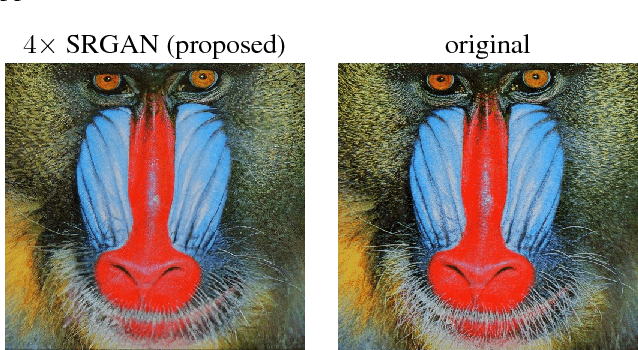
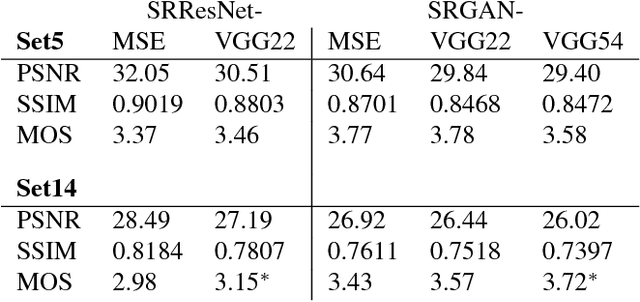
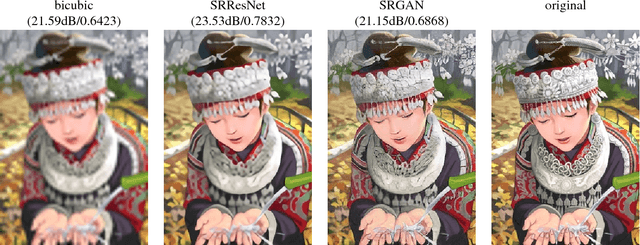
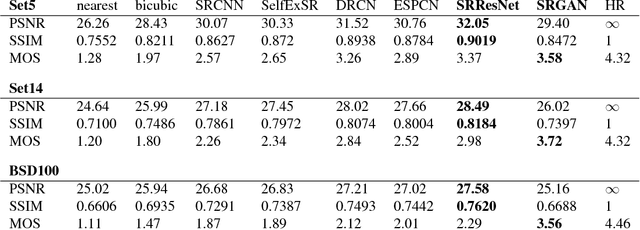
Abstract:Despite the breakthroughs in accuracy and speed of single image super-resolution using faster and deeper convolutional neural networks, one central problem remains largely unsolved: how do we recover the finer texture details when we super-resolve at large upscaling factors? The behavior of optimization-based super-resolution methods is principally driven by the choice of the objective function. Recent work has largely focused on minimizing the mean squared reconstruction error. The resulting estimates have high peak signal-to-noise ratios, but they are often lacking high-frequency details and are perceptually unsatisfying in the sense that they fail to match the fidelity expected at the higher resolution. In this paper, we present SRGAN, a generative adversarial network (GAN) for image super-resolution (SR). To our knowledge, it is the first framework capable of inferring photo-realistic natural images for 4x upscaling factors. To achieve this, we propose a perceptual loss function which consists of an adversarial loss and a content loss. The adversarial loss pushes our solution to the natural image manifold using a discriminator network that is trained to differentiate between the super-resolved images and original photo-realistic images. In addition, we use a content loss motivated by perceptual similarity instead of similarity in pixel space. Our deep residual network is able to recover photo-realistic textures from heavily downsampled images on public benchmarks. An extensive mean-opinion-score (MOS) test shows hugely significant gains in perceptual quality using SRGAN. The MOS scores obtained with SRGAN are closer to those of the original high-resolution images than to those obtained with any state-of-the-art method.
Real-Time Video Super-Resolution with Spatio-Temporal Networks and Motion Compensation
Apr 10, 2017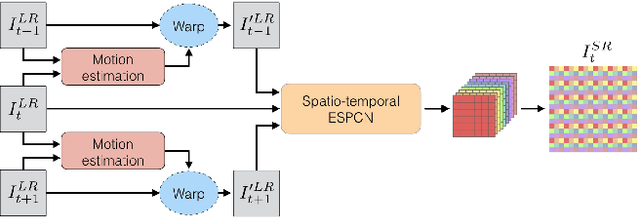
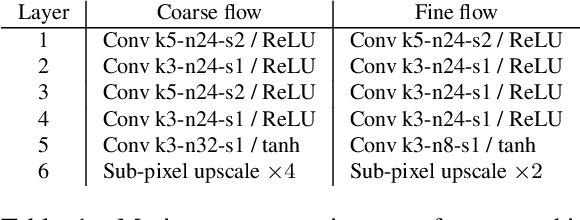


Abstract:Convolutional neural networks have enabled accurate image super-resolution in real-time. However, recent attempts to benefit from temporal correlations in video super-resolution have been limited to naive or inefficient architectures. In this paper, we introduce spatio-temporal sub-pixel convolution networks that effectively exploit temporal redundancies and improve reconstruction accuracy while maintaining real-time speed. Specifically, we discuss the use of early fusion, slow fusion and 3D convolutions for the joint processing of multiple consecutive video frames. We also propose a novel joint motion compensation and video super-resolution algorithm that is orders of magnitude more efficient than competing methods, relying on a fast multi-resolution spatial transformer module that is end-to-end trainable. These contributions provide both higher accuracy and temporally more consistent videos, which we confirm qualitatively and quantitatively. Relative to single-frame models, spatio-temporal networks can either reduce the computational cost by 30% whilst maintaining the same quality or provide a 0.2dB gain for a similar computational cost. Results on publicly available datasets demonstrate that the proposed algorithms surpass current state-of-the-art performance in both accuracy and efficiency.
 Add to Chrome
Add to Chrome Add to Firefox
Add to Firefox Add to Edge
Add to Edge